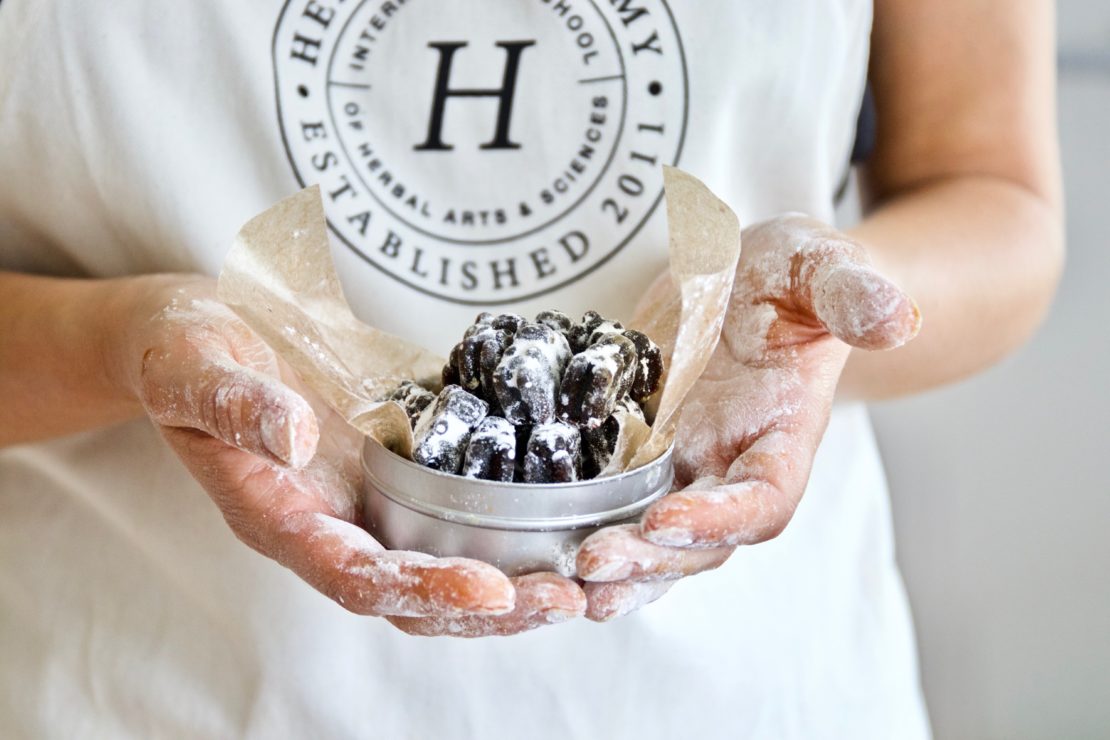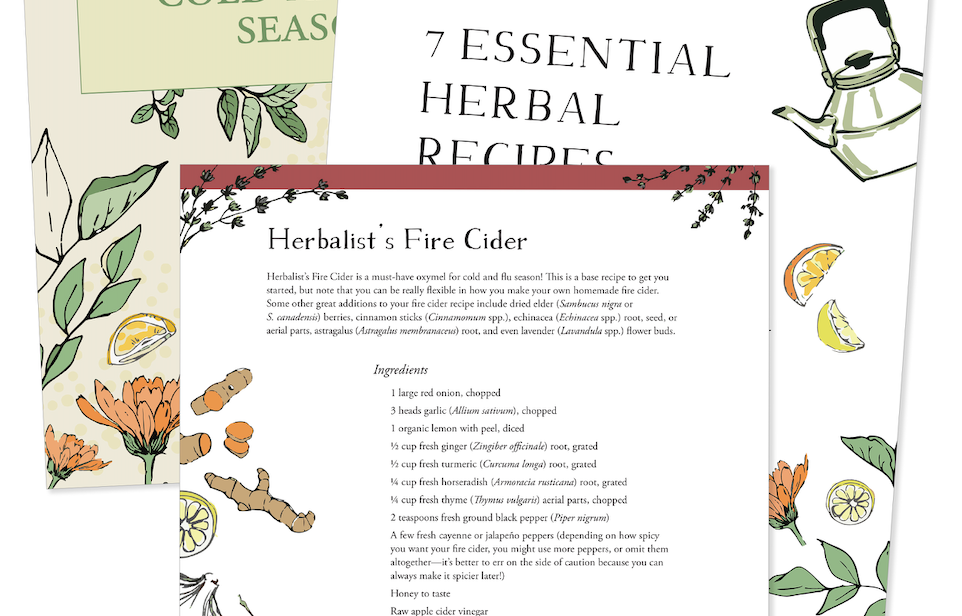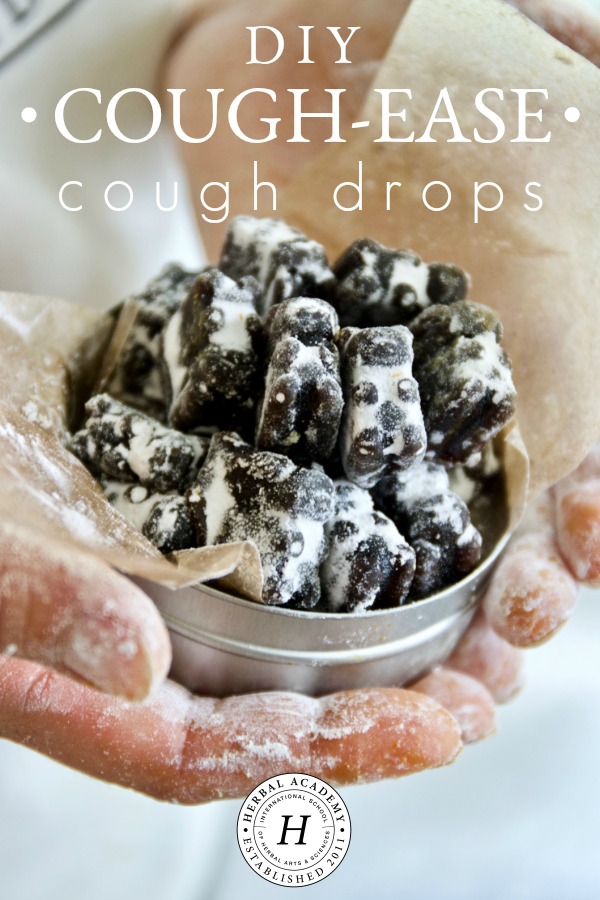
Video: DIY Cough-Ease Cough Drops for Dry, Scratchy Throats
During the cooler months of the year, herbs have plenty of opportunity to shine and be of benefit to us, particularly during cold and flu season. Not only can we utilize herbs during this season to help keep our immune system strong—hopefully, preventing us from catching a virus in the first place, but we can even use them to help the body mend more quickly and to assist in easing and soothing pesky symptoms that often accompany viral infections, such as a cough.
A cough is a common symptom experienced by many during cold and flu season, and while a cough, most times, is nothing too concerning, it can be quite irritating—particularly those dry, spasm-like coughs that seem to linger on and on for days.
Today, we’d like to share a video and recipe for some cough-ease cough drops that you can prepare in advance and keep on hand if you need them during cold and flu season, as well as any other time of the year when a dry cough presents itself.
Herbal Allies for Coughs
Before we share the recipe for these effective cough drops, let’s take a look at the herbs used in this preparation and how they help to ease a cough and soothe the hot, inflamed tissues of the throat.
As you can imagine, herbs with antispasmodic, anti-inflammatory, and demulcent properties are just the thing needed for dry, scratchy throats that are the result of spasm-like coughs. It is here that our combination of linden (Tilia spp.), peppermint (Mentha x piperita), plantain (Plantago spp.), thyme (Thymus vulgaris), and marshmallow (Althaea officinalis) shine.
Linden (Tilia spp.) is a gentle herb that provides many benefits to hot conditions such as a cough. With its mildly sedative and antispasmodic properties, as well as its affinity for upper respiratory conditions, linden is a perfect herbal ally for coughs.
Peppermint (Mentha x piperita) leaves not only provide a nice minty flavor to this blend, but the volatile oils found in the leaves add additional antispasmodic, antitussive, antimicrobial, and cooling benefits to these cough drops as well.
Speaking of antimicrobial herbs, thyme (Thymus vulgaris) is a great one, especially when it comes to respiratory conditions such as the common cold or the flu. Not only that, but thyme also offers anti-inflammatory and antispasmodic properties that can be beneficial in easing coughs and their accompanying symptoms. Another great benefit to adding thyme to cough drops is that it combines well with peppermint and creates a lovely flavor.
Plantain (Plantago spp.) leaf and marshmallow (Althaea officinalis) root, with their anti-inflammatory and demulcent properties, are the perfect addition to cough drops as the mucilage contained in these plants is soothing and cooling to the dry scratchy tissues of the throat.
Now that you know a bit of the benefits of the individual herbs in this cough drop blend, it’s time for the video and recipe!
Cough-Ease Cough Drops
Cough-Ease Cough Drops
Making effective homemade herbal cough drops requires a time commitment, but the reward is worth the effort. These soothing cough drops are great for dry, scratchy throats or spasm-like coughs. Not only will they ease your cough, they’ll soothe dry tissue in your throat as well.
Pint-sized glass canning jar
Fine mesh sieve or cheesecloth
2 cup glass measuring cup
2 small silicone candy molds (cough drop sized)
4-quart stainless steel saucepan
Large, rimmed, heat-proof baking sheet
Candy thermometer
Silicone spatula
Unbleached parchment or waxed paper
5 tsp linden (Tilia spp.) bract and flower
2 tsp peppermint (Mentha x piperita) leaf
1 tsp plantain (Plantago spp.) leaf
1 tsp thyme (Thymus vulgaris) aerial parts
1 tsp marshmallow (Althaea officinalis) root
1½ cups water
1 cup unbleached cane sugar
½ cup honey
Confectioner’s sugar (optional)
- To make a strong herbal infusion, place all herbs except marshmallow root, in a glass canning jar. Pour 1½ cups of boiled water over herbs and let steep for 1 hour. After an hour, add marshmallow root and let sit for another hour (marshmallow root’s soothing mucilage is best extracted in cool water).
- While herbs are infusing, place both silicone molds on a rimmed, heat-proof baking sheet and set aside.
- Strain herbs by pouring the mixture through a fine mesh sieve or several layers of cheesecloth over a glass measuring cup. Press the plant material (marc) to squeeze out every last drop of infusion. Compost the strained herbs. Reserve 1 cup of herbal infusion.
- In a 4-quart saucepan, clip a candy thermometer to the side of the pan. Combine 1 cup of herbal infusion, cane sugar, and honey in the pan and heat over medium-high heat. Continuously stir the mixture until the sugar is dissolved.
- Once the sugar is dissolved, allow the mixture to come to a boil. Occasionally stir the mixture, being sure to scrape the bottom of the pan well to prevent the sugar from burning. Just be sure to avoid scraping the sides of the pot as you don’t want to re-incorporate any crystalized pieces into your mixture as it will make your final product too brittle. Bringing the mixture to temperature can take a while. During this time, the mixture will expand quite a bit and become darker in color. However, once the mixture comes to temperature and gets to the hard crack stage, you have to move quickly, so keep a close eye on your candy thermometer and be sure your measuring cup and silicone molds are close by and ready to go!
- When the mixture reaches 250 degrees F, begin to stir constantly, stirring the bottom and avoiding the sides. When it reaches 302 degrees F, carefully pour the mixture into a glass measuring cup to make pouring easier. Pour the mixture into the silicone molds. Use your silicone spatula to help spread the candy into the molds more easily. This will help save you time as you don’t have to pour the cooling mixture into the molds so carefully.
- Once the molds are filled, allow them to cool for several hours or overnight before unmolding. Immediately wash all supplies that have come into contact with the cough drops with hot, soapy water to make cleaning easier. Otherwise, you’ll need to soak the supplies for a couple of hours.
- Once the cough drops have cooled, remove them from the molds by pressing on the back of the mold to pop the pieces out. You can toss the cough drops in confectioner’s sugar to help keep them from sticking to each other. Store in a single layer in an airtight labeled container, placing parchment or waxed paper between layers, at room temperature for 6 months (or longer when frozen).
- To use, suck on a cough drop anytime you experience a dry, scratchy throat or have a cough that won’t go away!
Be Prepared for Cold & Flu Season!

Learn even more about using herbs to support the body this season with our FREE ebook, Herbal Support for Cold & Flu Season!
Not only will you learn about healthy lifestyle changes that can help keep colds and the flu at bay, but you’ll also learn about 6 must-have herbal allies for the season as well. We’ll also share 7 of our favorite cold and flu season herbal recipes—many that use the aforementioned herbal allies. These recipes can help stimulate your immune system, support your body to recovery from viral illnesses quickly, ease spasm-like coughs, and cool hot bodies when fevers are present.
Get your free ebook and prepare for cold and flu season right here!








